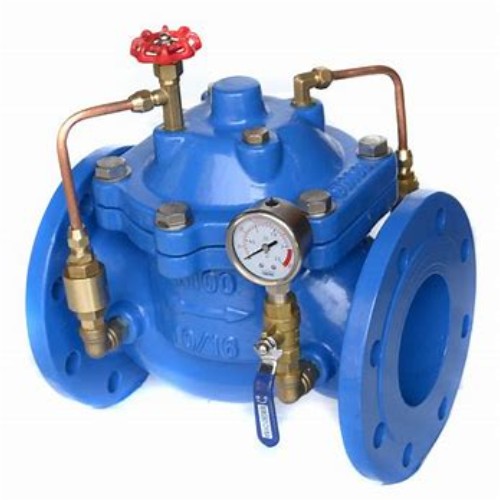Y Type Strainer Valve for Efficient Fluid Filtration and System Protection
Understanding Y-Type Strainer Valves A Comprehensive Overview
In various industrial applications, maintaining the integrity and efficiency of fluid systems is of paramount importance. One critical component that contributes to this goal is the Y-type strainer valve. Designed to protect pipelines and equipment from debris and particulate matter, this valve plays a crucial role in ensuring smooth and reliable operations.
What is a Y-Type Strainer Valve?
A Y-type strainer valve is a type of filter used in piping systems to remove unwanted solids from liquid or gas flows. Its design resembles the letter Y, which not only gives it its name but also influences its function. The valve features a filter element that captures debris while allowing the fluid to flow through. Typically constructed from materials such as stainless steel, cast iron, or plastic, Y-type strainers are versatile and suitable for a range of applications including water, oil, and gas systems.
How Does a Y-Type Strainer Work?
The operation of a Y-type strainer valve is fairly straightforward. As fluid flows through the pipeline, it enters the strainer's body through the inlet port. The fluid then passes through a mesh screen or perforated strainer element, which catches solid particles. Clean fluid continues through the outlet port while the contaminants remain trapped in the strainer. This design prevents particles from traveling downstream and causing potential harm to pumps, valves, and other critical components.
Key Features and Benefits
1. Efficient Filtration The primary advantage of a Y-type strainer is its ability to efficiently filter out unwanted particles. This safeguarding mechanism is vital for protecting sensitive equipment and extending their lifespan.
2. Easy Maintenance Y-type strainers are designed for convenience. Many models come with a removable cover or cap, making it easy to access and clean the filter element. Regular maintenance ensures optimal performance and prevents costly downtime.
3. Versatile Applications These strainers are compatible with various industries, including water treatment, chemical processing, oil and gas, and HVAC systems. Their adaptability allows them to be used in diverse environments where fluid contamination is a concern.
4. Pressure Drop Management One critical consideration in fluid dynamics is the pressure drop across a strainer. Y-type strainers are designed to minimize this pressure loss, ensuring that the flow rate remains consistent and efficient.
y type strainer valve

5. Compact Design The Y-shape not only offers functional benefits but also allows for a compact installation. This is particularly advantageous in systems with space constraints, where every inch counts.
Installation Considerations
Proper installation is crucial for the effective operation of a Y-type strainer valve. Here are some essential guidelines
- Orientation Y-type strainers can typically be installed in any orientation—horizontal, vertical, or inclined. However, the inlet and outlet should be positioned correctly to ensure optimal flow.
- Sizing Selecting the right size of the strainer is vital. An undersized strainer may cause significant pressure drops, while an oversized unit can lead to inefficient filtration.
- Placement It’s recommended to install the strainer upstream of any sensitive equipment, such as pumps and control valves, to provide adequate protection against contaminants.
Challenges and Solutions
Despite their many advantages, Y-type strainers do face challenges. One common issue is clogging, especially in systems with high levels of debris. Regular maintenance and installation of a bypass system can help mitigate this problem. Additionally, operators should monitor the pressure differential across the strainer regularly. An increase in pressure drop often indicates that the strainer needs cleaning or replacing.
Conclusion
Y-type strainer valves play a vital role in the maintenance of fluid systems across various industries. By effectively removing unwanted solids and protecting sensitive equipment, they ensure consistent operational efficiency. Understanding the function, benefits, and installation considerations of Y-type strainers is essential for any engineer or technician involved in fluid management. By investing in quality strainers and adhering to recommended maintenance practices, operators can enhance the reliability and lifespan of their systems. As industries continue to evolve, the relevance and importance of Y-type strainer valves will undoubtedly persist.
-
Top-Quality Pipe and Pipe Fittings for Reliable Fluid SystemsNewsAug.28,2025
-
Reliable Slip On Flange Manufacturer for Industrial ExcellenceNewsAug.28,2025
-
Premium Rubber Expansion Joints for Piping SystemsNewsAug.28,2025
-
Premium Electric Actuators for Smart Automation SolutionsNewsAug.28,2025
-
Innovative Flange Solutions for Modern Plumbing NeedsNewsAug.28,2025
-
High-Performance Exhaust Valves for Efficient Fluid SystemsNewsAug.28,2025
-
Buy WCB Gate Valve: Robust & Reliable Industrial SolutionNewsAug.28,2025




